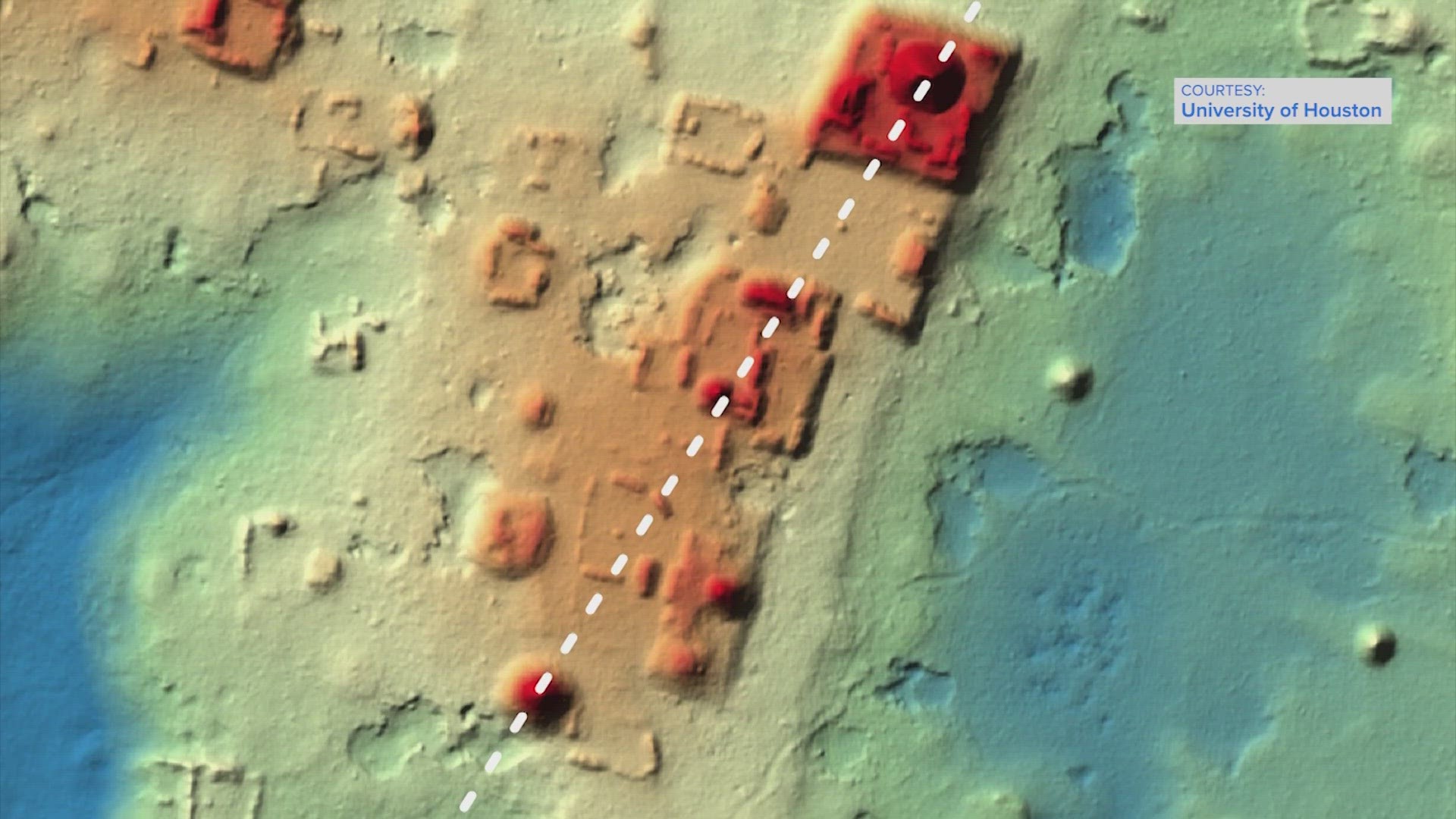HOUSTON — It sounds like the next "Indiana Jones" script but a real-life team of University of Houston researchers recently uncovered an ancient Maya city buried deep beneath the jungles of Mexico.
Flying high above the jungle canopy in the Yucatan Peninsula, they beamed hundreds of thousands of laser bursts each second to create a 3D map of what was hiding under the trees: a city believed to be over 1,000 years old.
“The interesting thing is that it was a total shot in the dark," Co-Principal Investigator with the National Center for Airborne Laser Mapping (NCALM) at the University of Houston Dr. Juan Carlos Fernandez-Diaz said.
Researchers in Mexico then used their 3D map to find the city by foot, verifying several 50-foot tall pyramids, a sports field and even pottery dating the city back to the late Classic Period, between the years 600 and 800.
"That’s when they get to study these sites a little more closely, and that’s where they are able to make more meaningful discoveries," Fernandez-Diaz explained.
He said the airborne light detection and ranging -- or lidar -- equipment allows them to explore areas that are very difficult to reach on foot.
“You can compare us to ultrasound technicians. We are the first to see the baby, but the doctor will tell you all about it and confirm the findings,” Fernandez-Diaz said.
They're calling the hidden city in the Yucatan Ocomtún, which means stone column in the Mayan language.
While rare and remarkable, the experts at NCALM have made other fascinating finds. Their track record includes ruins in 2012 in an area of Eastern Honduras where centuries-old legends talk of a “lost white city”; the 2016 mapping of more than 80,000 Maya structures including many previously unknown Maya settlements; and agricultural and defensive structures in the Guatemalan Peten jungle.
The Mayan Civilization was one of the most dominant indigenous societies of Mesoamerica.
Today, tourists can visit some of their more famous pyramids, like Chichen Itza and Tulum, not far from Cancun.
But researchers know many more of their secrets are still hidden.
“Finding the city is just the tip of the iceberg," Dr. Fernandez-Diaz said.
He said nothing beats opening a window and peering into another world, century or civilization.
"When we see it on the computer we think, ‘Wow!’ We are seeing these things for the first time in 1,000 years. It’s like time travel to see under the vegetation, to the roads, canals and ponds as they were that long ago,” he said.

